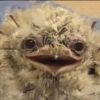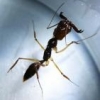I recently stumbled upon a Solenopsis Invicta colony presumably migrating to a new nest. I was able to capture a little over ten queens, as well as a few workers. I am currently keeping them in a small starter formicarium, where they have adjusted quite well.
Now that the queens will be kept in close approximation to each other, will they kill each other? Will they be okay with only a small amount of workers? What should I be feeding them? Any other advice would be greatly appreciated.


















